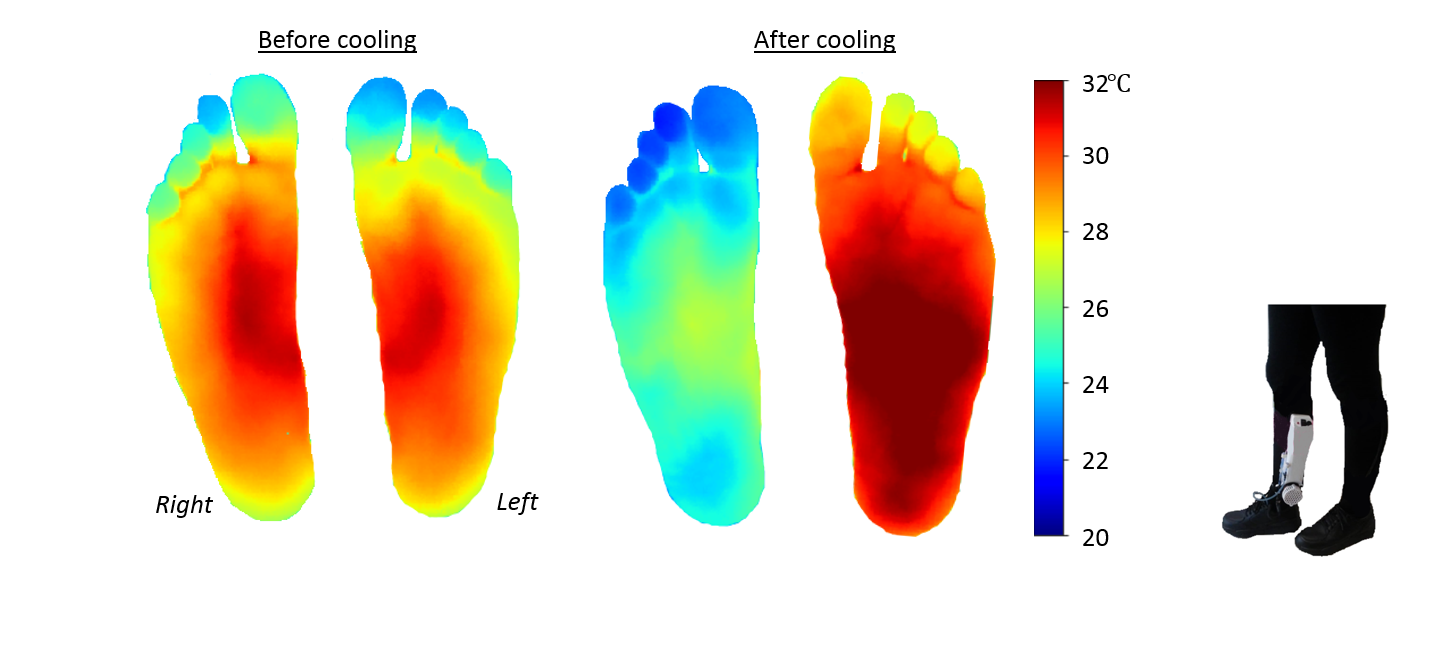For the 273,600 people in Dallas with diabetes, cooling insoles designed by UT Southwestern researchers could be a game-changer for lowering their risk of diabetic foot ulcers.
Dr. Metin Yavuz, an inventor and associate Professor at UTSW, created shoe prototypes with electronic cooling systems that could prevent the overheating of foot tissue, as the dangerous warmth causes development of ulcers and peripheral neuropathy.
In these cases that involve diabetic foot ulcers, many patients need to go through lower extremity amputations. Dr. Yavuz’s work might eventually prevent thousands of amputations each year—the invention could flatten the staggering statistic that 40 percent of the patients who develop a DFU die within the next 5 years.
Laying out the details on how the shoes function, Dr. Yavuz explains how the shoes prevent patients’ tissue from becoming too warm, and thus more vulnerable to breaking down.
“The device, which the researchers named Temperature and Pressure Monitoring and Regulating Insoles (TAPMARI), consists of a small box strapped to the wearer’s calf that houses a cooling unit, a small water pump, a battery pack, and a thermostat,” Dr. Yavuz says. “The cooling unit harnesses a type of thermoelectric cooling called the Peltier effect to chill water to a desired temperature that’s then pumped into insoles placed in the wearer’s shoes.”

[Photo: Hatice Yavuz]
Frustrated with the accepted yet ineffective norms of comprehending and treating Diabetic Foot Ulcers (DFU), Dr. Yavuz and his colleague decided to think outside of the shoe box.
“I have been challenging the status quo on the understanding of DFU for a long time,” Dr. Yavuz says. “There is consensus that DFU occurs because of high vertical forces (or foot pressures) that act on the sole. Despite the wide availability of insoles that treat high vertical forces, there is an increasing trend in foot amputation rates, which indicates the status quo is not working. We think it is the frictional (horizontal) force rather than the vertical force (i.e. pressure) that causes DFU.”
Moreover, multiple-perspective thinking has been popularized in multiple professional spheres. Dr. Yavuz believes this style of teamwork could be used for undertaking issues related to diabetes.

Dr. Metin Yavuz [Photo: Courtesy UT Southwestern Medical Center]
His professional history attests to a more unconventional approach to problem solving.
“I completed my doctoral work at the Cleveland Clinic in biomedical engineering,” Dr. Yavuz says. “As an engineer, I have the eyes of an outsider, which I believe gives me a different angle with which I can tackle the problem. I am a huge fan of bringing diverse perspectives to the problem. As an engineer I can help by better understanding the pathology (cause of the problem) and developing more effective preventive devices.”
Funded by private and public donations and grants, the cooling shoes represent a long-held aspiration for communal well-being kept alive by the collective efforts of those who are aware of the issue, Dr. Yavuz says.
“I started dreaming about cooling shoes as early as 2006, as a grad student,” Dr. Yavuz says. “But it wasn’t until I obtained a $5,000 grant from UTSW’s Center for Translational Medicine that I was able to make it a reality. If it was not for that grant and subsequent funding from the NIH, we would not be able to achieve these goals. Therefore, I urge policy makers and philanthropists to please increase federal funding for R&D, so we can tackle new challenges.”
Multitudes of Texans have specific needs for this product, according to Dr. Yavuz. But with relevant issues comes the potential to make sweeping positive change in public health.
“If high foot temperature is really one of the culprits, like we think it is, then people here definitely need these shoes, given the Texas climate,” Dr. Yavuz says. “Not to mention, we know that diabetic amputation rates are higher in Southern states. Given these demographics, I am hoping that we can prevent a big portion, if not all, of DFU and associated amputations and provide relief to patients.”
![]()
Get on the list.
Dallas Innovates, every day.
Sign up to keep your eye on what’s new and next in Dallas-Fort Worth, every day.

































































